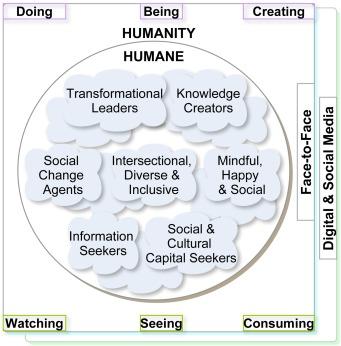Future Directions for SEL in Schools: Emerging Trends and Next Steps
social Emotional Learning (SEL) is becoming a vital component of modern education, shaping not only academic achievement but also the mental well-being and citizenship of future generations. With changing societal expectations,advancing technology,and evolving research,the landscape of SEL in schools is rapidly transforming. This article will explore the future directions for SEL in schools, including emerging trends, innovative strategies, and next steps to ensure social-emotional growth for all students.
Introduction: The Evolving Importance of SEL in Schools
As educational institutions worldwide recognize the profound impact of social and emotional skills on students’ holistic growth, SEL programs are gaining unprecedented attention. SEL in schools is no longer an elective or “nice-to-have” add-on; it is an essential part of creating safe,supportive,and effective learning environments. But how is SEL evolving, and what will tomorrow’s approach look like?
Why Focus on the Future of SEL?
Addressing the future directions for SEL in schools is crucial as student needs, teaching methodologies, and the world itself rapidly shift. By staying proactive, educators and policymakers can:
- Keep pace with students’ dynamic mental health and social needs
- Leverage technology to personalize and expand SEL opportunities
- Create more inclusive, equitable, and culturally responsive school communities
- Empower students with the skills needed for success in a complex, global society
Emerging Trends in SEL: What’s Shaping the Future?
1. integration of SEL and Academic Learning
Schools are moving away from isolated SEL lessons toward embedding social-emotional skills within everyday academics. Teachers increasingly incorporate self-awareness, responsible decision-making, and relationship skills into core subjects like math, literacy, and science.
- Exmaple: Solving math problems collaboratively to build teamwork and dialog
- Example: language arts discussions to enhance empathy and perspective-taking
2. Culturally Responsive and Equitable SEL
There is growing recognition that SEL must be tailored to reflect students’ diverse backgrounds. The latest trend involves co-designing SEL curricula with input from students, families, and communities to ensure cultural relevance and promote educational equity.
- SEL resources that represent varied cultures, languages, and experiences
- Anti-bias and anti-racism embedded into SEL frameworks
3.Technology-Driven SEL Solutions
Digital platforms are revolutionizing how SEL is delivered. Interactive apps, virtual classrooms, and AI-based feedback tools help personalize students’ SEL journeys and provide real-time support, especially as remote and hybrid learning persist post-pandemic.
- Self-reflection apps for tracking emotions and SEL progress
- Online modules for SEL skills practice outside the classroom
- AI-powered analytics for teachers to identify SEL gaps early
4. Whole-School and Whole-Community Approaches
standalone SEL lessons are giving way to systemic approaches involving all stakeholders: educators, support staff, families, and even local organizations. A school-wide SEL culture ensures seamless support for every student both in and out of school.
- Staff training on trauma-informed practices
- Parent SEL workshops and resources
- Community partnerships to reinforce SEL values beyond school
5. Assessment and Data-Driven SEL
The emphasis on accountability means more elegant SEL assessment tools are being developed. These tools measure not only knowledge but also competencies and well-being, guiding schools to make evidence-based enhancements.
- Student self-report surveys on belonging and emotional health
- Performance-based SEL assessments as part of grading
- Data dashboards for ongoing monitoring and improvement
Benefits of Forward-Thinking SEL Implementation
- Improved student academic outcomes and motivation
- Reduced behavioral issues and absenteeism
- Healthier school climates and stronger peer relationships
- Enhanced teacher well-being and professional satisfaction
- Greater educational equity and inclusiveness
- Development of crucial “future-ready” skills: resilience, adaptability, and empathy
Real-World Case Study: Successful SEL innovation
Case Study: Oakwood Primary School’s Tech-Integrated SEL Program
Facing increased student stress and post-pandemic mental health challenges, Oakwood Primary piloted a blended SEL program. The school combined class-based lessons with weekly app check-ins, where students anonymously log emotions and reflect on experiences via tablets. Data analytics help counselors identify trends and offer targeted support. After one year, the school saw:
- A 27% decline in disciplinary incidents
- Marked improvement in students’ reported sense of belonging
- Teachers reporting more positive classroom dynamics
This case illustrates the power of combining technology, data, and whole-school engagement as a scalable model for the future of SEL in schools.
Practical Tips: Preparing for the Next Era of SEL
- Conduct a needs assessment: Survey staff, students, and families to identify SEL priorities and gaps.
- Pilot innovative tools: Explore digital SEL apps and adaptive curriculum resources.
- Prioritize professional development: Invest in training educators on new SEL approaches and cultural competence.
- Foster school-wide SEL culture: Involve all staff and encourage peer collaboration to sustain progress.
- Engage families: share resources, host workshops, and create communication channels for home-school SEL alignment.
- Use data wisely: Select assessment methods that emphasize growth, well-being, and actionable insights.
- Evaluate and iterate: Routinely review SEL strategies to ensure thay evolve with student needs and research.
Looking Forward: Next Steps for SEL Adoption and Growth
As we look toward the future of SEL in education, schools and districts should consider these pivotal next steps:
- Establish clear district- or state-level SEL standards reflecting both research and community values
- Secure sustainable funding for SEL programs, staff positions, and technology resources
- Collaborate and share best practices across schools, networks, and communities
- Advocate for SEL at policy levels to ensure long-term prioritization and equity
- Develop partnerships with mental health professionals and organizations
conclusion: Shaping the Future of SEL in Schools
The future of SEL in schools promises to be more integrated, equitable, and technologically advanced. By embracing these emerging trends, educational leaders will be better equipped to empower students with the social, emotional, and academic skills they need for success in a rapidly changing world. Now is the time to invest in forward-thinking SEL initiatives, foster collaboration, and create environments where every student thrives.
Stay tuned for more insights on Social Emotional Learning and how your school can lead the way into the future!

